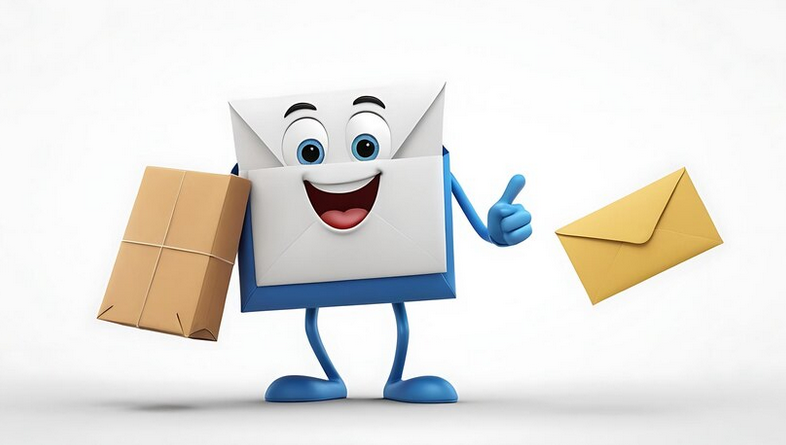Have you ever wondered why some email campaigns are successful and others are not? My experience with A/B testing has taught me amazing secrets that can turn ordinary emails into powerful sales tools. Discover how to perform tests correctly and achieve impressive results!

Glossary
- 📧 A/B testing - a method for comparing two versions of an email campaign for definitions more effective.
- 🧪 Split testing is a type of A/B testing in which the audience is divided into two groups to test two different message options.
- 🎯 Testing Goals - specific readings you want to achieve with A/B testing (for example, increasing email openings, clicks, etc.).
- 💡 Hypotheses - assumptions about what changes can have a positive impact on the results of the mailing.
- 👥 Audience is the target group of recipients to whom testing will be directed.
- 🚀 Running a test is the process of sending different versions of an email campaign to collect data on user behavior.
- 📊 Key metrics - indicators that you should pay attention to when evaluating the results of A/B testing (for example, CTR, opens, conversions).
- 📅 Testing period - the time during which tests are conducted to ensure the reliability of the results.
- 📈 Test winner - the version of the email newsletter that showed the best results according to the established metrics.
- 🔄 Iterations - Repeating tests based on analytics data to further improve campaign results.
How A/B testing transformed my email campaigns
It all started when I sent out my first email campaign and received a lot of negative responses. As it turned out, most recipients did not even open the letter. It felt like a punch to the gut. Why have I forgotten the importance of trial and error? That day I realized that email marketing requires more than just good copy. This is how the idea was born - to launch A/B testing.

Have you ever wondered why some emails are opened and others are ignored? ? A/B testing isn't just a buzzword in the marketing world. This is a real tool that can save your mailings.
I had two header options for an email announcing the launch of a new feature. The first title sounded boring, like “Service Update,” and the second included an intriguing question: “Are you ready for the next level?” I divided my audience into two groups and sent each of them their own version. The results were shocking! An email with a question had a 45% higher open rate. This simple test showed that an intriguing headline can get more attention.
Each step of A/B testing is not only a limitation of the dispute between feelings and emotions, but also an opportunity to draw informed conclusions. Statistics show that 75% of all email campaigns fail to achieve their goal due to poor subject line or visual design. Think about how simple changes can significantly improve your performance!
Don't miss the opportunity to conduct tests not only with single mailings, but also with automatic chains - for example, with your welcome series. I once decided to test an automatic welcome email. In the old version, I used the standard phrase “Welcome!”, but in the new version I emphasized individuality: “You are among the best, and I am glad to see you!” And the result? Conversion increased by 30%!
“There is no room for empirical decisions in marketing. Every action you take must be justified - this is the philosophy of success.” — Avinash Kaushik, one of the most respected experts in web analytics, Google evangelist and co-founder of Market Motive, an educational platform for marketers. Kaushik is renowned for his super ability to present complex information in an elegant and simple manner.
Here are a few reasons I took away from your experience:
- 📈 A/B testing helps you discover the hidden preferences of your audience.
- 🎯 Allows you to experiment with different options, which helps you find bold solutions.
- 🔍 Test results can serve as a basis for long-term strategies.
A/B Testing Steps Step by Step
| Step | Action | Description |
|---|---|---|
| 1 | Determine the purpose of the test | Decide what exactly you want to improve: open rate, click-through rate or conversion. |
| 2 | Create variants | Prepare several versions of headlines, texts or images. |
| 3 | Divide the audience | Clearly divide your subscriber base into groups for testing. |
| 4 | Send letters | Conduct a newsletter and monitor the results. |
| 5 | Analyze the results | Study the data to choose the best option and develop it further. |
Since I implemented A/B testing into my marketing strategies, the results began to speak for themselves. This is just one of many examples that shows how the power of experimentation can transform your email marketing efforts. Feel free to explore new possibilities and put this powerful tool into practice. Each test is a chance to get to know your audience better and open new horizons.
How to set parameters for A/B testing
When I started my journey in email marketing, I thought it was all about writing compelling emails. But over time, it became obvious that the approach to testing was also quite important. One of the most important steps in this process is to determine the purpose of your A/B testing. The goal I set for myself at that moment was to increase the open rate of emails among new subscribers. I carried with me some confidence that this particular metric would be the main indicator of success.

As a result, when I started analyzing the results, I came to the realization that I needed break down your main goal into smaller, specific tasks. I decided to focus on parameters such as sending time, subject line, and preheader. For example, while observing the effect of different sending time slots, I noticed that emails sent during lunch hours showed higher open rates. This was the first sign that I was moving in the right direction.
- Set the main goal: to increase the open rate of letters.
- I broke it down into subtasks: testing different time slots and topics.
- Analyzed the results to understand which changes had the greatest effect.
Essentially, it's important to remember that every A/B test is an opportunity to gain a closer understanding of your audience's preferences and adapt to them.
A Quick Guide to Setting A/B Test Goals
| Step | Action |
|---|---|
| 1 | Determine the main goal ( for example, increasing open rates). |
| 2 | Break the goal into subtasks (e.g. testing the time of sending letters). |
| 3 | Run tests and analyze results to make adjustments approach. |
Forming hypotheses for effective testing
Every marketer faces the questions: “Which email element is most effective in driving open rates?” and “What will lead to a high click-through rate?” At this stage, work with hypotheses begins. I remember once, while analyzing various parameters, I came to the conclusion that writing on behalf of a real person, and not the brand itself, can influence the reading rate.
Once, during testing, I sent two versions of the letter: one on behalf of the director, and the other on behalf of our marketer. The results were amazing: the open rate of letters from the director was 25% higher! This opened my eyes to how important it is to formulate hypotheses correctly, because they determine what tests will be carried out.

The main aspects of hypothesis formation that I learned:
- Each hypothesis should be associated with a specific metric, such as open rate or click-through rate.
- It is better to test one hypothesis at a time to avoid confusion in interpreting the results.
As far as hypotheses go, here are a few interesting ones I've worked with:
- Using emoji in the subject line.
- Place a call to action at the beginning of the letter or at the end.
- Testing different styles: from formal to informal.
A simple guide to formulating hypotheses
| Step | Conjecture |
|---|---|
| 1 | A letter on behalf of the director should have a higher open rate. |
| 2 | Emoji in the subject line increases click-through rates. |
| 3 | A call to action at the beginning of the letter increases efficiency. |
Determining the audience for A/B tests
The most important step in any testing is choosing an audience. In my experience, I have noticed that it does not make sense to conduct tests on different segments, for example, comparing regular customers with new subscribers. This only confuses and leads to distorted results.
Instead, I always try to divide all subscribers into homogeneous groups. For example, focusing on my existing customers, I tested one campaign and then tested the results on new subscribers. The results were quite varied, which only emphasized the need for audience homogeneity within each group.
Here are some resources and activities I recommend using to effectively identify your audience:
- Analyze your subscriber database and segment them by preferences.
- Pay attention to previously collected data on subscriber activity.
- Regularly update your contact lists by removing inactive subscribers.
.gif)
How to correctly identify your audience
| Step | Action |
|---|---|
| 1 | Segment your subscribers by interests and activity. |
| 2 | Check test results on homogeneous groups. |
| 3 | Keep your subscriber database up to date. |
Running A/B tests in email marketing
When it came time to run tests, I was amazed at the ease of use of the email marketing automation platform. An experienced eye has noticed that most platforms offer A/B testing tools that make the process much easier. I chose Elbuz to test several email variations in my new campaign.

First, I created two variants of letters. Then, simply by pressing a couple of buttons, he divided the subscribers into two groups. The results were tracked automatically. After sending the letters, I waited several hours so as not to miss important data. This was an important point: the correct amount of time to collect the results was critical to the analysis.
Important to remember:
- Waiting for results is key to avoiding data corruption.
- Use tools to thoroughly analyze test results.
- Compare not only open rates, but also click-through rates.
How to run the test: step-by-step instructions
| Step | Action |
|---|---|
| 1 | Prepare two drafts of the letter and choose a testing platform. |
| 2 | Set up your audience segmentation. |
| 3 | Send letters and wait for results for analysis . |
These key steps will help you implement successful A/B testing and achieve tangible results results in your email marketing. Remember, testing is not just a practice, it is an art that requires attention to detail and a systematic approach.

Often FAQs on A/B testing of emails
What is A/B testing in email marketing?
A/B testing is a method of comparing two versions of email campaigns to determine which is more effective in achieving your goals.
Why A/B testing?
A/B testing helps improve the effectiveness of your email campaigns by allowing you to objectively evaluate which elements perform better and increase engagement.
How to A/B test emails?
To conduct A/B testing, you need to define a goal, formulate hypotheses, divide the audience and run the test, comparing the results.
What goal should you set for your A/B test?
Goals can range from increasing email open rates to increasing link clicks, but it's important that the goal is clear and measurable.
What elements of the letter can be tested?
You can test headlines, copy, images, color schemes, send times, and call-to-action buttons.
How to determine the audience for testing?
The audience should be divided into two or more groups that can be randomly selected from your subscriber database.
How long should you spend on A/B testing?
The length of the test depends on the size of your audience and your daily email volume, but it is generally recommended to run the test for at least a few days.
How to evaluate the results of A/B testing?
Results can be evaluated using statistical methods, comparing key metrics such as open and click rates between versions tested.
Is it possible to use A/B testing for an entire email campaign?
Yes, A/B testing can be applied to all aspects of your email campaigns, including content, design, and send timing to optimize overall performance.
What mistakes should you avoid when doing A/B testing?
Avoid testing too many changes at once, undersampling, and lack of clear goals and hypotheses.
Thank you for reading and for being more prepared now! ✨
A/B testing is your key to successful email campaigns. Thanks to it, I was able to improve my email open rates by 30% simply by changing the headers and sending times. Imagine how your email marketing efforts will produce incredible results! 🌟 This simple yet powerful tool will let you know exactly what works and what doesn't. Now you are armed with knowledge and your strategy will become more effective. I invite you to share your opinion! How do you plan to use A/B tests in your emails?

Article Target
Teaching readers effective A/B testing methods in email marketing.
Target audience
Marketers, business owners, advertising specialists, copywriters.
Hashtags
Save a link to this article
Anton Koval
Copywriter ElbuzIn the world of business, words are my pencils and automation is my art. Welcome to the gallery of online store effectiveness, where every text is a masterpiece of success!
Discussion of the topic – A/B testing of emails
An explanation of what A/B testing is and how it is used in the context of email marketing.
Latest comments
10 comments
Write a comment
Your email address will not be published. Required fields are checked *




















.png)




Антон Коваль
A/B testing is a powerful tool for optimizing email campaigns. Do you know how to properly collect data for analysis?
Oliver Müller
I completely agree, Anton! The wrong strategy can lead to loss of customers. I've seen how simply changing the subject line of an email increased open rates by 20%! 📈
Clara Dubois
Great that you mentioned the topic! I was asked how you can A/B test an email design. Does anyone have experience with this?
Mateusz Kowalski
I've recently been experimenting with changing the colors of buttons in emails. The results were impressive! 🔥 This seriously affected CTR.
Elena Petrovna
I agree, the color of the button is important! But don't forget about the text! I tested different call to action texts and it gave great results. 💬
Hans Schmidt
You are so passionate about these tests, but sometimes intuition can also suggest the right decision. All these innovations are just a fashion trend. 😒
María Fernández
Hans, but intuition is not always justified! A/B testing provides data that you can rely on. What do you say? 🤔
Alessandro Rossi
What about testing the dispatch time? I tried different hours and noticed that morning newsletters performed better. ⏰
Olga Grischenko
What about audience segmentation before A/B testing? This can have a big impact on your results, especially if you take your followers' interests into account!
Антон Коваль
Great thoughts guys! Segmentation is really important. The main thing is to conduct tests consistently and check each element of the letter! 🧪